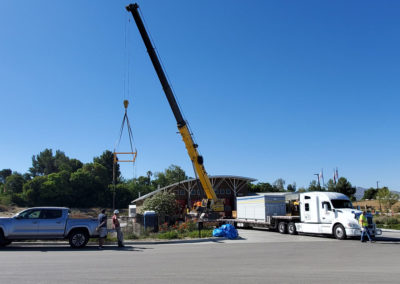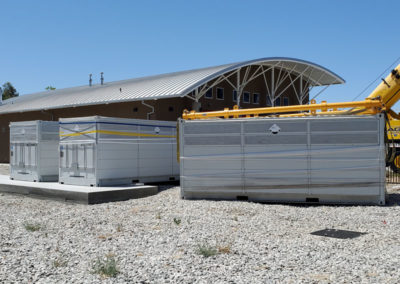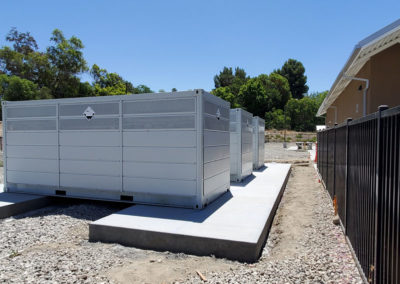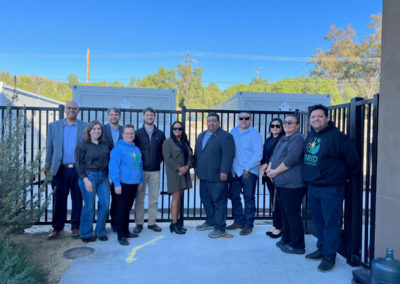Soboba Fire Station
Long-Duration Energy Storage + Solar at Native American Site Protects Critical Infrastructure From Impacts of Climate Change
Climate change is affecting weather patterns across the globe and is exacerbating the potential for droughts and storms that will increase the risk of blackouts and wildfires to communities.
The Brief
As part of a $20m initiative by the California Energy Commission (CEC) to incentivise the deployment of non-lithium, long-duration energy storage technology in the state, and because the Soboba community is in a district identified by the California Public Utilities Commission as a “Tier 3 – Extreme” threat area, the Soboba Fire Station was recognised as needing independent energy security to be provided by a solar + battery energy storage system.
This energy storage system will provide resilience and energy security in times of Public Safety Power Shutoff (PSPS) events and other outages that are becoming more frequent.
solar PV
Coupled with a
Invinity VS3 VFB
hours duration
The battery will be used for Solar Shifting, storing excess solar generation during the daytime for use when the sun is not shining, and also for Resiliency, so that in the event of a blackout or PSPS the battery will provide power for a minimum of 10 hours duration.
The Result
Alongside funding committed by the CEC, the Soboba Band of Luiseño Indians, the site owners, and GRID Alternatives, the nation’s largest nonprofit solar installer, chose Invinity’s safe and non-degrading vanadium flow battery technology to be deployed alongside the solar array due to its ability to provide a minimum of 10 hours of continuous back up power during times of unplanned outages and PSPS events at any time of the day or night.
Working closely with Soboba Band and GRID Alternatives, Invinity successfully delivered 3 VS3 flow batteries in 3 containers, capable of storing up to 0.5 MWh of energy and installed them alongside a 50 kW onsite solar array.
This long-duration energy storage facility will ensure that excess power generated during daylight hours can be utilized “on-demand” when required, day or night.
Benefits of long duration, resilient flow batteries for critical infrastructure
The increased severity of storms and wildfires across the U.S. can sometimes mean that power outages / blackouts can last for a significant amount of time as the level of damage done to power lines can take longer to repair. In a recent county level study of more than 231,000 power outages across the U.S. between 2018 and 2020 caused by extreme weather (see map below), 17,484 were for at least 8 hours, a duration “widely viewed as medically relevant” or in other words, a risk to life.
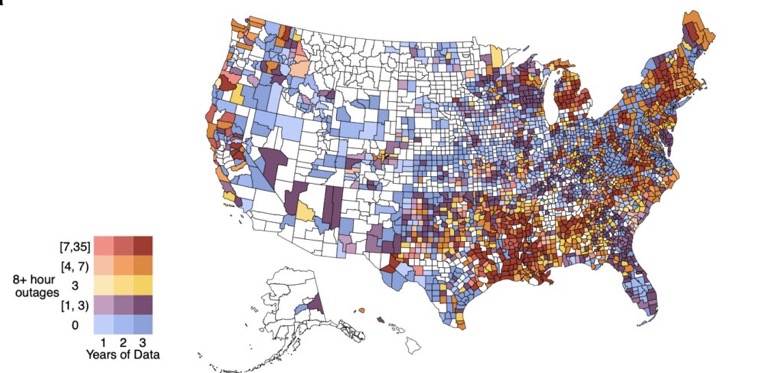
The study also analysed the risks of power outages from certain types of weather:
- Heavy rainfall = 5x more likely
- Tropical cyclones or storms = 14x more likely
- Tropical cyclones and heavy rainfall on a hot day = 52x more likely
California has a highly variable climate with dramatic and sometimes volatile swings between droughts and floods which too often affects power grids across the state (as recently as early February 2024, storm winds left more than 850,000 homes and businesses without power). The state also increasingly suffers from wildfires, which over the last two decades have increased in both size and intensity.
California has already outlined its need for more power to keep the lights on to cope with the increased demand for electricity:
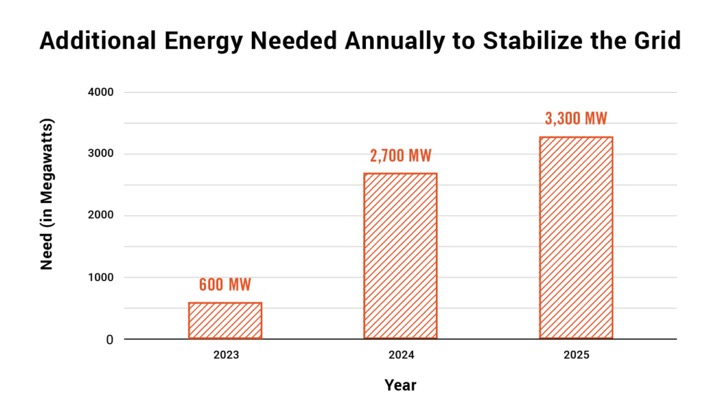
As more and more thermal generation is shutting down as a result of the energy transition, battery storage is increasingly required to fill the gap. Long-duration energy storage technologies such as vanadium flow batteries will be increasingly vital to stabilizing electricity grids and creating a reliable and resilient energy system as more renewable power is generated. These batteries soak up excess power and discharge it back into the grid for sustained periods when renewable generation is low or demand on the grid is high. Vanadium flow batteries have a service life exceeding 20 years even in heavy-duty daily usage, delivering better project economics for energy-shifting applications than comparable lithium-ion batteries.
Partners
Interested in Finding Out More?
If you’re a utility, developer, EPC, or financier please contact our commercial team to discuss the details of your project. We work with you to develop a robust business case and financial model.
